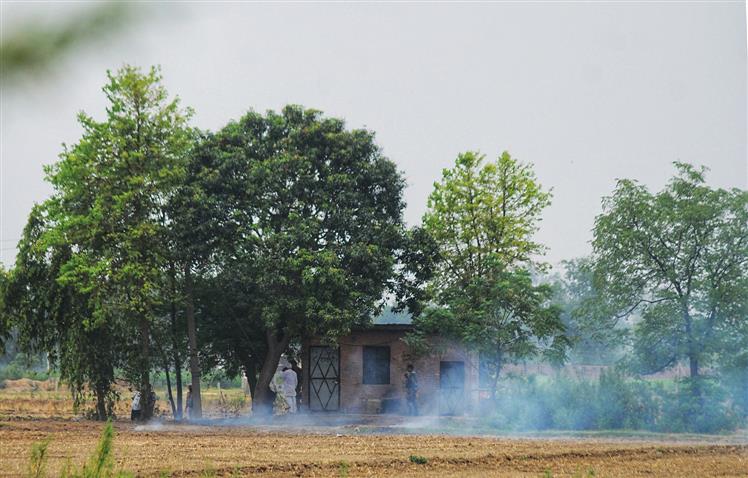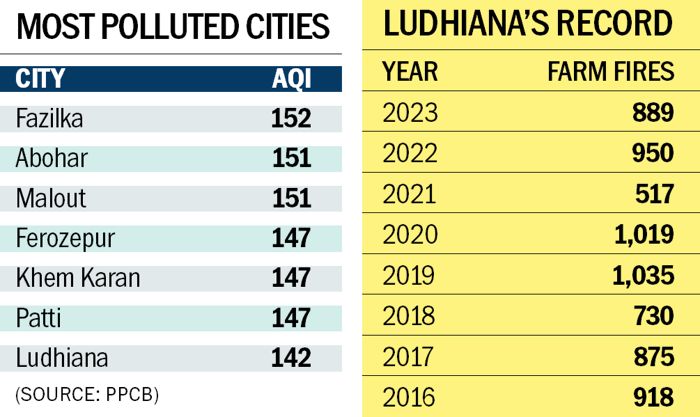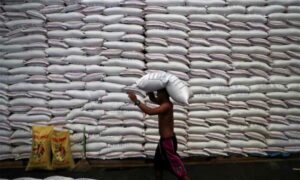Wheat season ends, farm fires less than last year in Ludhiana district

As the current wheat harvesting season, popularly known as Rabi, officially drew to a close on Monday, farm fires remained less than the season’s cumulative count of 2022 in Ludhiana district, official figures have confirmed.
However, as many as 889 stubble burning cases recorded during the current year had already surpassed the season’s total count reported in 2021 when 517 stubble burning cases were registered, 2018 when 730 farm fires were recorded and 875 fire events captured in 2017.
The higher count of farm fires during previous years included 950 in 2022, 1,019 in 2020, 1,035 in 2019, and 918 in 2016.

Even as the fire events this season remained less than 2022, the raging fires in the agriculture fields made Ludhiana the third worst-hit district in the state with a total of 889 cases of crop residue burning recorded in Punjab’s biggest and largest district, in terms of area and population, till May 29.
While Moga remained the worst-hit with as many as 1,010 farm fires, Gurdaspur reported 954 stubble burning cases, which were second highest in the state.
Ludhiana’s 889 fire events this year were 6.42 per cent less than 950 stubble burning incidents reported during the last Rabi season from April 1 to May 29 last, the data compiled by the Punjab Remote Sensing Centre (PRSC) in Ludhiana has revealed.
The daily graph of farm fires has also seen a major dip in the last week of the current Rabi season in Ludhiana with only 14 cases reported between May 23 and 29. While no case of stubble burning was recorded in the district on four days (May 29, 26, 25 and 23), one case was reported on May 28, two on May 27, and 11 on May 24.
With this, the air pollution in the state’s industrial capital has also considerably declined during the past few days as the air quality index (AQI) has come down to 142 on Monday, which was considered “unhealthy for sensitive groups only”, with PM2.5 concentration in Ludhiana air currently 10.4 times above the World Health Organisation (WHO) annual air quality guideline value.
The current AQI level has also substantially improved Ludhiana’s ranking from being the most polluted city in the state till recently to turning seventh most polluted city on May 29.
While Fazilka remained the most polluted city in the state on Monday with AQI 152, Abohar and Malout recorded the second highest AQI of 151 each.
Among other cities that were more polluted than Ludhiana on Monday were Ferozepur, Khem Karan and Patti with AQI 147 each.
On the stubble burning front, Mohali remained the least affected district with a minimum of 20 crop residue burning cases, Ropar turned the second best district with 41 farm fires during the entire Rabi season.
Among other districts, which remained better than Ludhiana, were Amritsar with 871 farm fires, Barnala 542, Bathinda 586, Faridkot 464, Fatehgarh Sahib 138, Fazilka 437, Ferozepur 847, Hoshiarpur 410, Jalandhar 622, Kapurthala 504, Malerkotla 179, Mansa 333, Muktsar 587, Pathankot 92, Patiala 419, Sangrur 637, Nawanshahr 185, and Tarn Taran which reported 586 fire events till Monday.
Campaigns showed results, says DC
Ludhiana Deputy Commissioner Surabhi Malik said: “As a result of sustained awareness, education and enforcement drives to sensitise all stakeholders involved, incidents of stubble burning have decreased this season, leading to considerable improvement in Ludhiana’s air quality. We are committed to providing a clean and safe environment to district residents.”
Moga: 1,010
Gurdaspur: 954
Ludhiana: 889
EXPERTS RECOMMEND
- Wear a mask outdoors
- Run an air purifier
- Close your windows to avoid dirty outdoor air
- Avoid outdoor exercise














